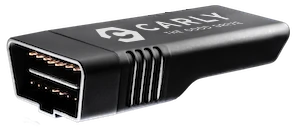Identical faults
The following faults are identical to P0113. For these, you can follow the information on this page:
P0110 – Intake Air Temperature Sensor 1 Circuit
P0113 Code Definition
Intake Air Temperature Sensor 1 Circuit High
What Does the Engine Code P0113 Mean?
The character "P" in the first position of diagnostics trouble code (DTC) represents the powertrain system (engine and transmission), "0" in the second position means that this is a generic OBD-II (OBD2) DTC. The "1" in the third character position in a DTC indicates that the fuel and air metering system is experiencing a malfunction. The last two characters "13" are the DTC number. OBD2 Diagnostic Trouble Code P0113 indicates that an intake air temperature (IAT) sensor is reading voltage that is too high. Cold air has a higher density than hot air. Therefore, cold air requires more fuel to be injected to maintain the proper air-fuel ratio, which is why the powertrain control module (PCM) monitors the temperature of the air entering the engine. This is achieved by sending a reference voltage to the Intake Air Temperature (IAT) sensor and monitoring the voltage that is returned. The IAT sensor works as a resistance-based sensor by decreasing resistance when the temperature increases. The IAT sensors consist of two wires, one wire receives the 5V signal reference from the PCM and another one sends the decreased voltage back. When the PCM sees a returning voltage signal higher than 4.91 volts for over half a second, it stores OBD-II (OBD2) DTC P0113 inside the fault memory. At the same time, the check engine light (CEL), also called malfunction indicator lamp (MIL), turns on.
Repair How To's for related faults
Carly's expert mechanics have identified the following related fault codes. With the information for these fault codes it is often possible to identify and better repair your faulty part/system:
Contents
Carly Universal Scanner

What Is the Cause of P0113?
While the most common cause of the P0113 code is a faulty or damaged intake air temperature (IAT) sensor, P0113 can also be related to other issues:
A damaged or loose IAT wiring connections
A dirty air filter
A defective mass air flow (MAF) sensor
Faulty PCM/ECM
What Are the Symptoms of Code P0113?
The main symptom to the driver is the illumination of the check engine light (CEL), also called malfunction indicator lamp (MIL). The driver very likely will not notice any drivability problems, although there may be the following symptoms:
An increase of fuel consumption
Trouble starting the engine in cold
Lean air-fuel mixture (increased combustion temp.) that may result in damage to the engine
Poor acceleration

How much does it cost to diagnose P0113?
Visiting a car repair shop and letting them perform a diagnostics check can cost you $60-$100. For almost the same price you can get Carly. Its advanced features can cover what a professional automotive scanner that costs over $3,000 would, and more!
Carly OBD2 ScannerWhich Tools Are Needed To Diagnose P0113?
To find out more about the P0113 code that is generated and stored in the Powertrain Control Module (PCM) of your car, the only tool you need is the Carly Universal OBD2 Scanner, which works for all car brands in the world with an OBD2 port. Carly is a revolutionary solution that allows you to access your car’s data with your phone and translates this information into powerful insights, predictions, and possibilities. This saves you trouble, time, and money.
How To Diagnose and Clear the Code P0113?
Performing a diagnostics check with a diagnostic scanner helps you identify a particular problem area that is outside the normal range and shows where a fault might be occurring. This helps you to detect errors before they cause more damage to your vehicle. In comparison to generic OBD devices that only provide OBD-level engine-related data, Carly can run advanced manufacturer-level diagnostics, check all your ECUs in your car (like ABS, airbag, multimedia) and get deeper insights. You can find additional information about the trouble code and understand the severity of the problem. With the new Smart Mechanic feature, you get additional professional insights and tips from expert mechanics. You are able to check components and their mechanics, find detailed repair tips, and learn about potential future damage. After you have fixed the problem you can easily clear the fault codes with Carly, too. Also, the diagnostic results are safely stored inside the app or as convenient PDF reports you can share with your friends or a mechanic.
Common Mistakes When Diagnosing the P0113 Code
The most common mistake is to look and try to fix each individual OBD2 code without having a holistic approach. Understanding the interrelationship of OBD-II (OBD2) systems is crucial to determining the root cause of the problem and finding the right solution. For example, a very common cause of the P0113 code is a bad connection between the IAT sensor and its circuit because of dirt or it being too loose. So while it could be that all you need to do to fix P0113 is inspect the wiring and connections, many people rush immediately to replace Intake Air Temperature Sensor.
How Serious Is Code P0113?
While it is common for a driver to experience no driveability problems when the P0113 trouble code is present, driving with this code can damage an engine. To avoid high costs of potential engine damages, it is recommended to have this code properly fixed as soon as possible.
How to Fix the P0113 Code?
Depending on the root cause of the problem, one or more of the following repairs can fix the P0113 code:
Inspect wiring and connections
Rewire or replace the IAT sensor
Replace air filter
Replace the mass air flow (MAF) sensor
Replacing the PCM

Estimated Cost of Repair for the P0113 Code
Depending on the root cause of the issue, the costs of fixing the code P0113 can start from $50.
Learn More about the P0113 Code
How Does the Intake Air Temperature (IAT) Sensor Work?
The Intake Air Temperature (IAT) Sensor is a negative temperature coefficient (NTC) thermistor that correlates the temperature of the incoming air with the magnitude of resistance by decreasing resistance as the temperature increases. The Intake Air Temperature (IAT) Sensor is used by the powertrain control module (PCM) to monitor the temperature of the air entering the engine. A standalone IAT sensor consists of two wires — one receives the 5V signal reference from the PCM and one sends the decreased voltage back.
Where Can I Find the IAT Sensor?
For most vehicles, it is located between the air intake box and the throttle body. However, the Intake Air Temperature sensor can also be integrated with the mass air flow (MAF) sensor or the Manifold Absolute Pressure (MAP) sensor.
*Every car is unique. The Carly Features that your car supports depend on the model, build year, hardware, and software in the car. Plug the scanner in the OBD2 port, connect to the app, run your first diagnostics, and check which features are available for your car. Also, keep in mind that any information provided on this website is for informational purposes only and should be used at your own risk. Mycarly.com is not responsible for any errors or omissions, or for the results stemming from the use of this information.


